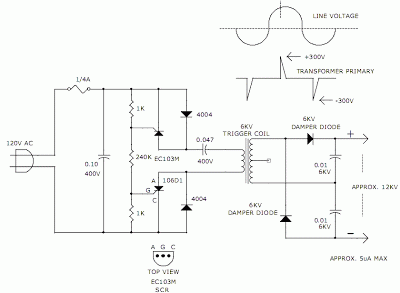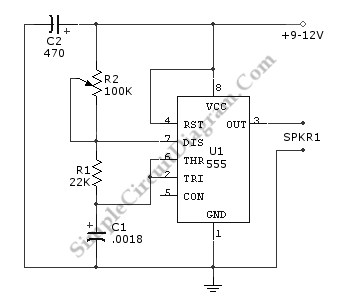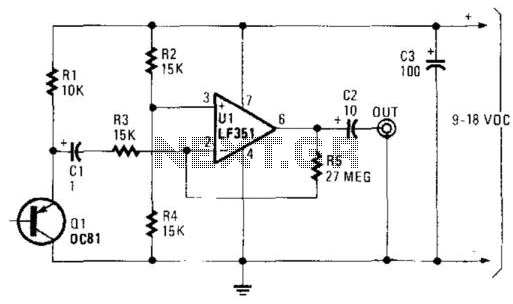
Pulse Delay Generator

This circuit is a delayed pulse generator that provides pulse rate and independent control of the initial delay. The pulse generator of this circuit is.
The delayed pulse generator circuit is designed to produce a pulse output after a specified delay, allowing for precise timing control in various applications. This circuit typically employs a combination of resistors, capacitors, and a timing component such as a 555 timer IC or a microcontroller to achieve the desired delay and pulse characteristics.
The operation begins with the charging of a capacitor through a resistor, which determines the delay period. The time constant, defined by the product of the resistor (R) and capacitor (C) values (τ = R × C), dictates how long it takes for the capacitor to reach a certain voltage level, triggering the output pulse. Once the voltage across the capacitor exceeds a predefined threshold, the output transitions from low to high, generating the pulse.
Additionally, the pulse width can be adjusted by modifying the resistor and capacitor values, allowing for independent control over the pulse rate and duration. This flexibility makes the delayed pulse generator suitable for applications such as timing circuits, signal modulation, and as a trigger for other electronic devices.
In practical implementations, the circuit may include features such as adjustable delay settings, output indicators, or protection components to enhance reliability and user interaction. Overall, the delayed pulse generator is a versatile component in electronic design, providing essential timing functions across a wide range of systems.This circuit is a Delayed Pulse Generator that is used to provide pulse rate and independent control of initial delay. The pulse generator of this circuit is. 🔗 External reference
The delayed pulse generator circuit is designed to produce a pulse output after a specified delay, allowing for precise timing control in various applications. This circuit typically employs a combination of resistors, capacitors, and a timing component such as a 555 timer IC or a microcontroller to achieve the desired delay and pulse characteristics.
The operation begins with the charging of a capacitor through a resistor, which determines the delay period. The time constant, defined by the product of the resistor (R) and capacitor (C) values (τ = R × C), dictates how long it takes for the capacitor to reach a certain voltage level, triggering the output pulse. Once the voltage across the capacitor exceeds a predefined threshold, the output transitions from low to high, generating the pulse.
Additionally, the pulse width can be adjusted by modifying the resistor and capacitor values, allowing for independent control over the pulse rate and duration. This flexibility makes the delayed pulse generator suitable for applications such as timing circuits, signal modulation, and as a trigger for other electronic devices.
In practical implementations, the circuit may include features such as adjustable delay settings, output indicators, or protection components to enhance reliability and user interaction. Overall, the delayed pulse generator is a versatile component in electronic design, providing essential timing functions across a wide range of systems.This circuit is a Delayed Pulse Generator that is used to provide pulse rate and independent control of initial delay. The pulse generator of this circuit is. 🔗 External reference
Warning: include(partials/cookie-banner.php): Failed to open stream: Permission denied in /var/www/html/nextgr/view-circuit.php on line 713
Warning: include(): Failed opening 'partials/cookie-banner.php' for inclusion (include_path='.:/usr/share/php') in /var/www/html/nextgr/view-circuit.php on line 713





